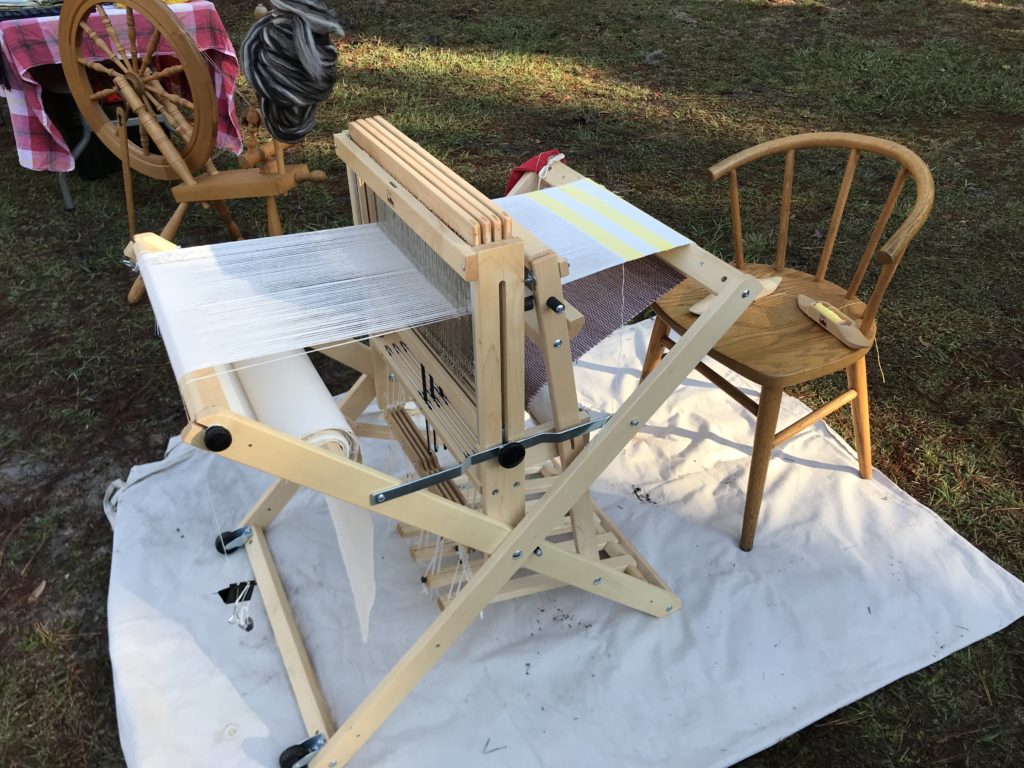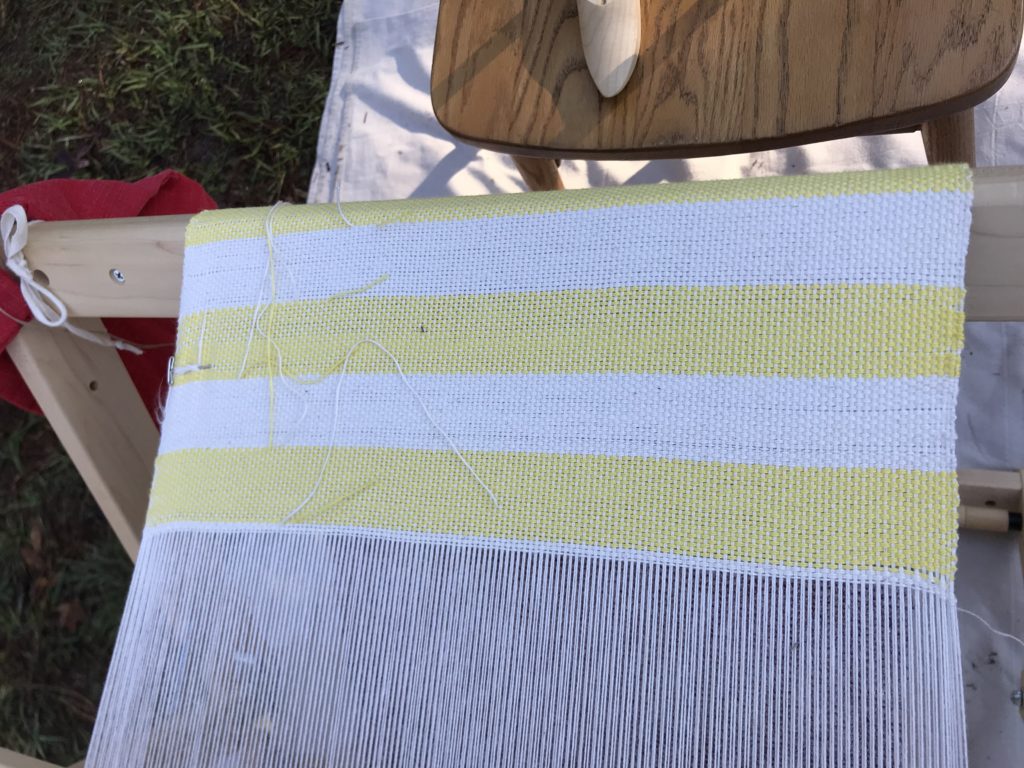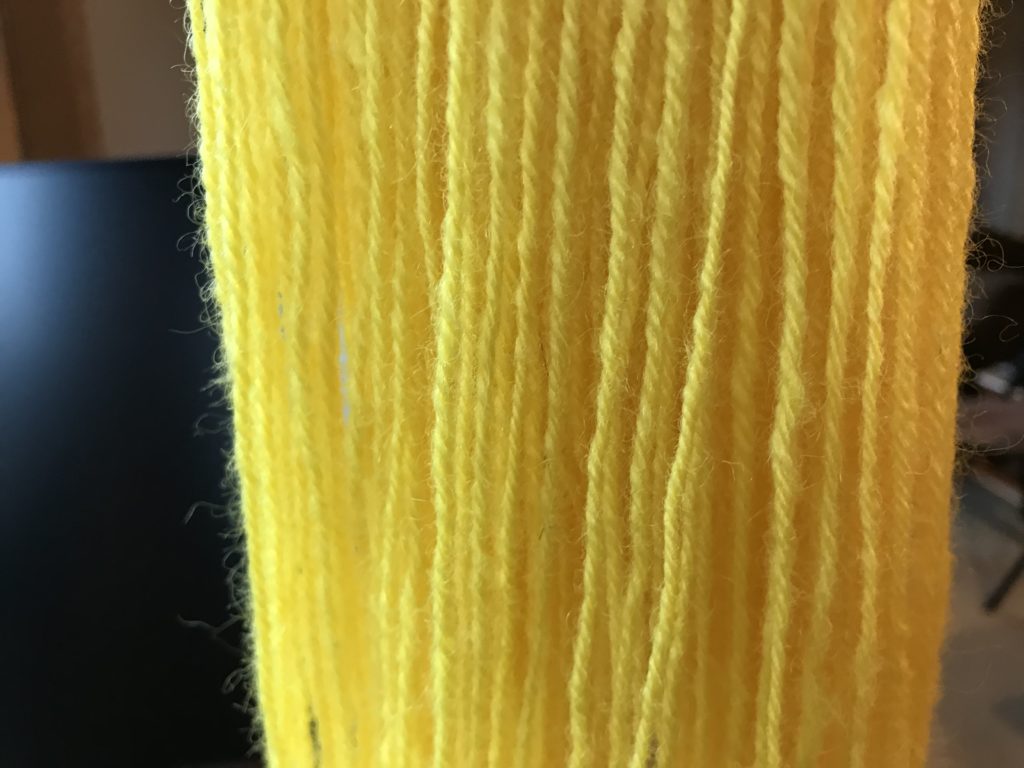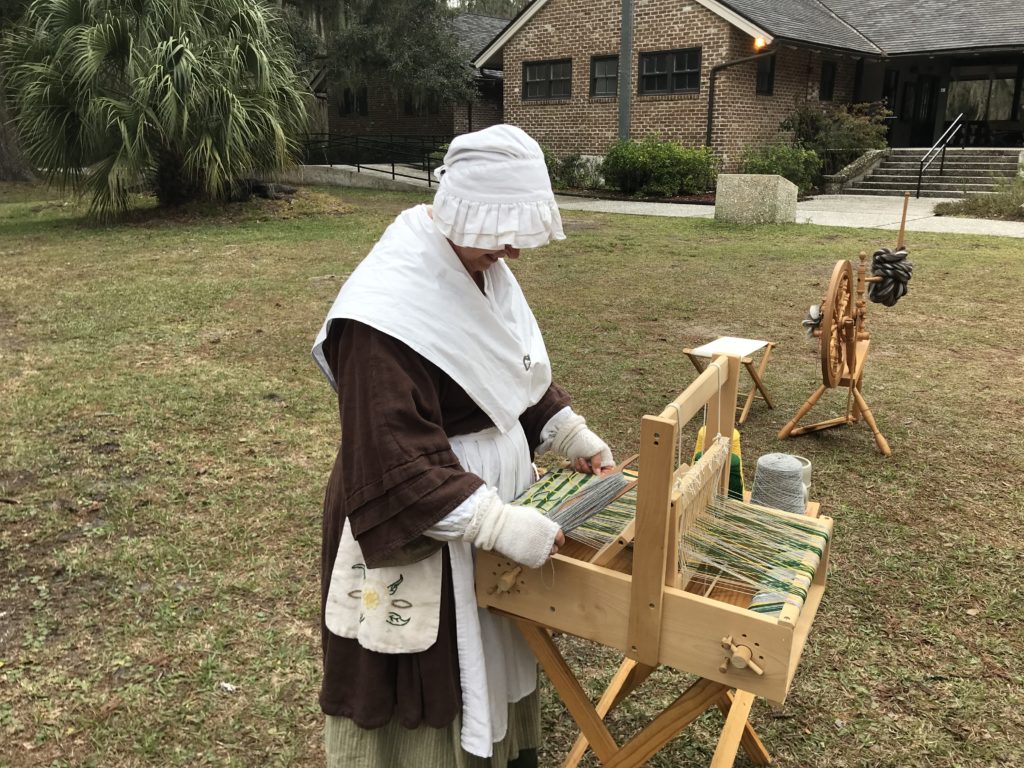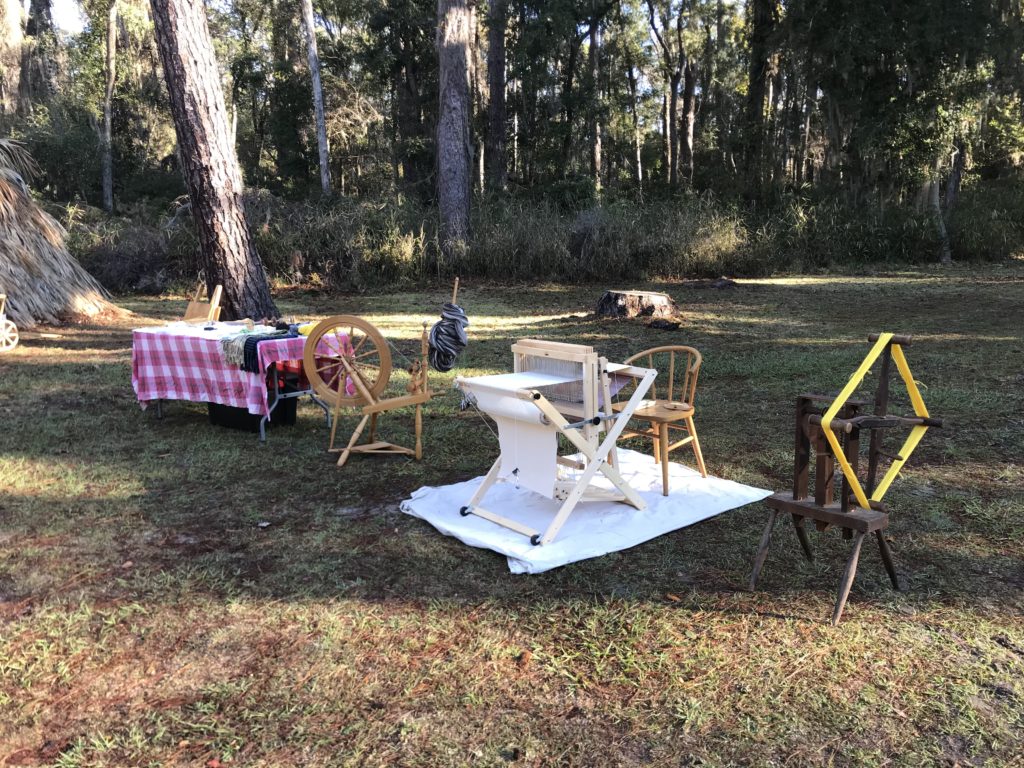
This is our fourth year at Fort Frederica National Monument and the third year I have been giving my textile talk. Each year I add a little more. The first year I demonstrated spinning and gradually built up my textile table talk. The second year Ranger Michael bought me a little toy loom that I used to demonstrate basic weaving. This year I have my own loom and I move around between the spinning wheel, loom, and my textile table.
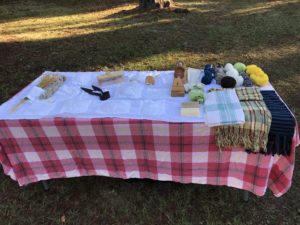 My textile table has the four kinds of textiles available to women of the Colonial Period: wool, linen, silk, and cotton. I have the raw materials and can show each step in the processing of the material to the finished cloth. The textile table holds samples of each kind of cloth that I have spun and woven.
My textile table has the four kinds of textiles available to women of the Colonial Period: wool, linen, silk, and cotton. I have the raw materials and can show each step in the processing of the material to the finished cloth. The textile table holds samples of each kind of cloth that I have spun and woven.
Cotton wasn’t really done much, even in Georgia, until about 1800 when cotton plantations and slavery became big business. The cotton gin, invented in 1793, was the reason the industry really took off. James Oglethorpe wanted Georgia to be a silk producing colony. Although the colonists planted thousands of mulberry trees and imported silk worms, English merchants were never willing to pay the price to make silk worthwhile.
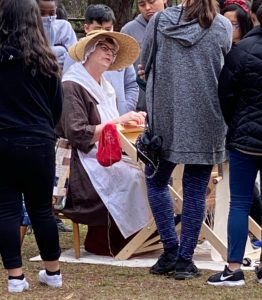
So, during the Fort Frederica period, 1736 – 1758, the two most common fabrics were linen and wool. People are very interested in hearing how you process flax into linen. I have also been pleased this year to see how many people want to watch me weaving. They study the loom with fascination, amazed that people put so much work into making cloth.
One sheep would produce the wool for one jacket. But you had to shear the sheep, wash the wool, card and brush the wool, spin it into yarn, warp the loom, weave the cloth, cut out the jacket, and hand sew it together before you would have a new garment. A very long and involved process. It takes about 5,000 yards of spun yarn to produce one yard of cloth. No wonder people didn’t have many clothes!
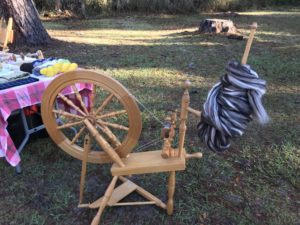
I have been spinning an American Jacob fleece. American Jacob sheep are naturally two-colored: white and black. The roving comes out looking as if it has black and white stripes. Because this fleece was so well prepared for spinning, it has been a joy to spin. So far I have 600 yards of soft, triple-plied yarn. Not enough for a yard of cloth yet! But I might try weaving it into a scarf.
Right now I have ten yards of cotton warp on the loom. I have been teaching Linda and Gail, the other two living history volunteers, how to weave it into simple dish towels. I think the warp I have will make ten to twelve dish towels. We are currently weaving dish towel six (I think – it is hard to keep track). Hopefully we will be done with all of them before our season at Fort Frederica is over. I’d like for Gail and Linda to each have one they can take with them.
I like living history days when I can give my textile talk at Fort Frederica. I love teaching people about the clothing they wear. It helps them think about the work that goes into it and not take those clothes for granted.

